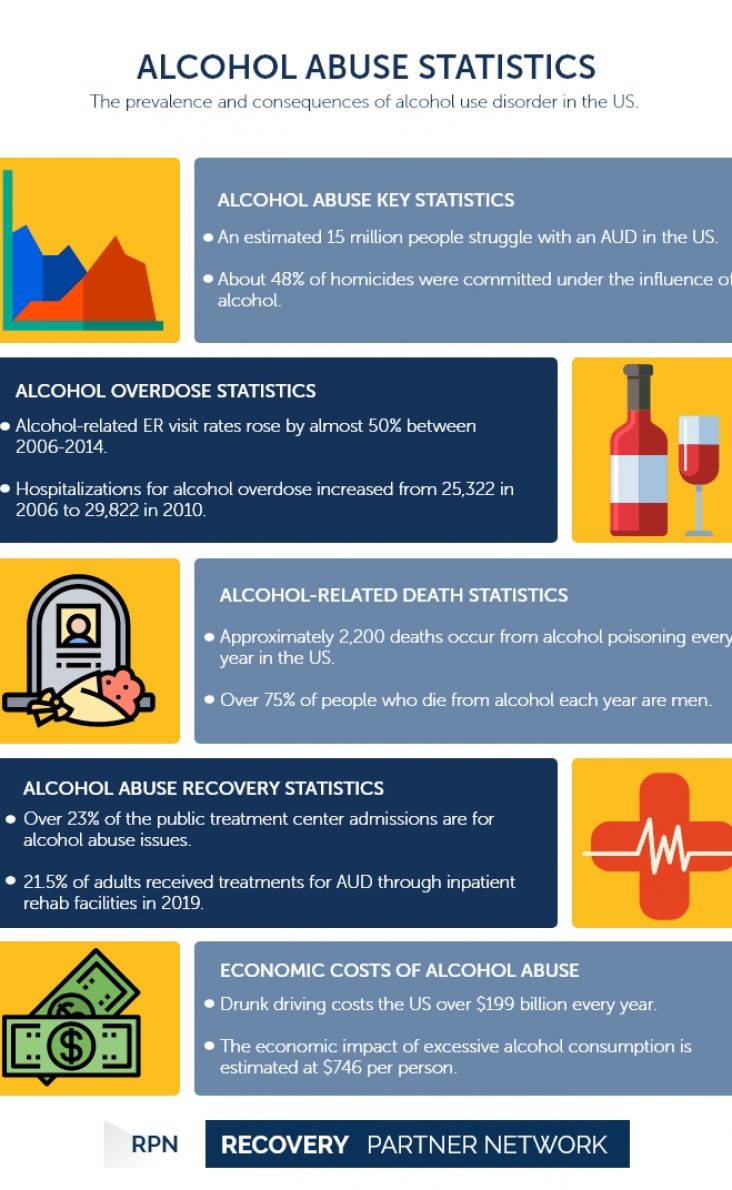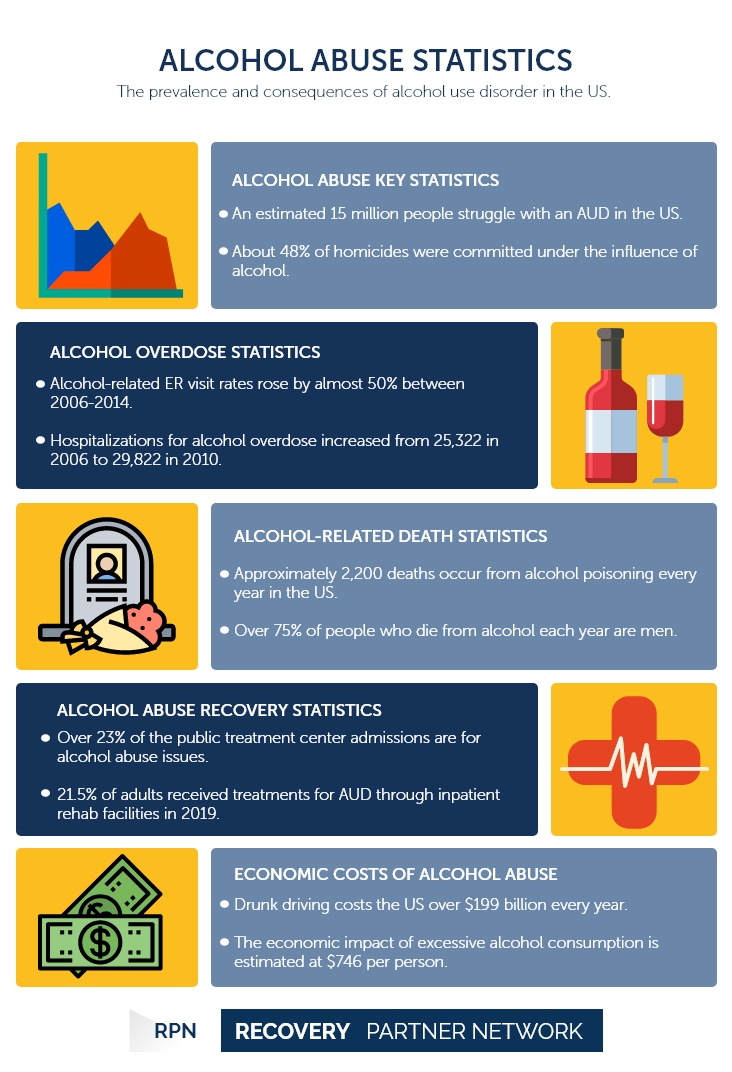The prevalence and consequences of alcohol use disorder in the US.
Alcohol Abuse Statistics
Substance use disorder
- Alcohol abuse statistics
- Amphetamine abuse statistics
- Cannabis abuse statistics
- Cocaine abuse statistics
- Heroin abuse statistics
- Illicit drug abuse statistics
- Inhalant abuse statistics
- Methamphetamine abuse statistics
- Opioid abuse statistics
- Prescription Drug abuse statistics
- Tobacco abuse statistics
Alcohol abuse statistics | Table of Contents
Alcohol Abuse
Alcohol consumption has remained a socially acceptable practice globally. Moderate drinking or
social drinking has become a part of life in many societies and cultures. However, due to its highly
addictive nature, the line between moderate drinking and excessive drinking can sometimes be
blurred. Physicians define alcoholism or Alcohol Use Disorder (AUD) as a chronic relapsing brain
disease characterized by an individual's inability to stop or control alcohol use despite adverse
consequences.
Alcoholism has remained a public health crisis in the US for many decades. It affects individuals
across all genders, ages, and socioeconomic backgrounds. The prevalence of alcohol consumption,
alcoholism, and the consequences associated with this practice has significantly increased in the past
few decades.
Alcohol Abuse Key Statistics
- An estimated 15 million people struggle with an alcohol use disorder in the United States.
- Teen alcohol use is responsible for 4,700 fatalities each year.
- According to the National Institute on Alcohol Abuse and Alcoholism (NIAAA), 85.6 percent
of people in the US aged 18 or older confirmed consuming alcohol at some point in their
lifetime in 2019. - About 48 percent of homicides were committed under the influence of alcohol.
- 52.5 percent of full-time college students aged 18 to 22 have been consuming alcohol in the
past month relative to 44.0 percent of those of the same age. - Alcohol-related liver disease was the principal cause of almost 1 in 3 liver transplants in
2009. - NIAAA reports that the prevalence of Fetal Alcohol Syndrome (FAS) is 2 to 7 cases per 1000.
The frequency of Fetal Alcohol Spectrum Disorders (FASD) is as high as 20 to 50 cases per
1000. - In 2019, 25.8 percent of individuals (aged 18 or over) reported binge drinking in the past
month; 6.3 percent reported having been involved in heavy alcohol consumption in the past
month. - Centers for Disease Control and Prevention (CDC) reports that in 2018, 5.1 percent of adults
were involved in heavy drinking in the previous year. - According to a study in 2012, more than 10 percent of children in the US live with a parent
with alcohol addiction.
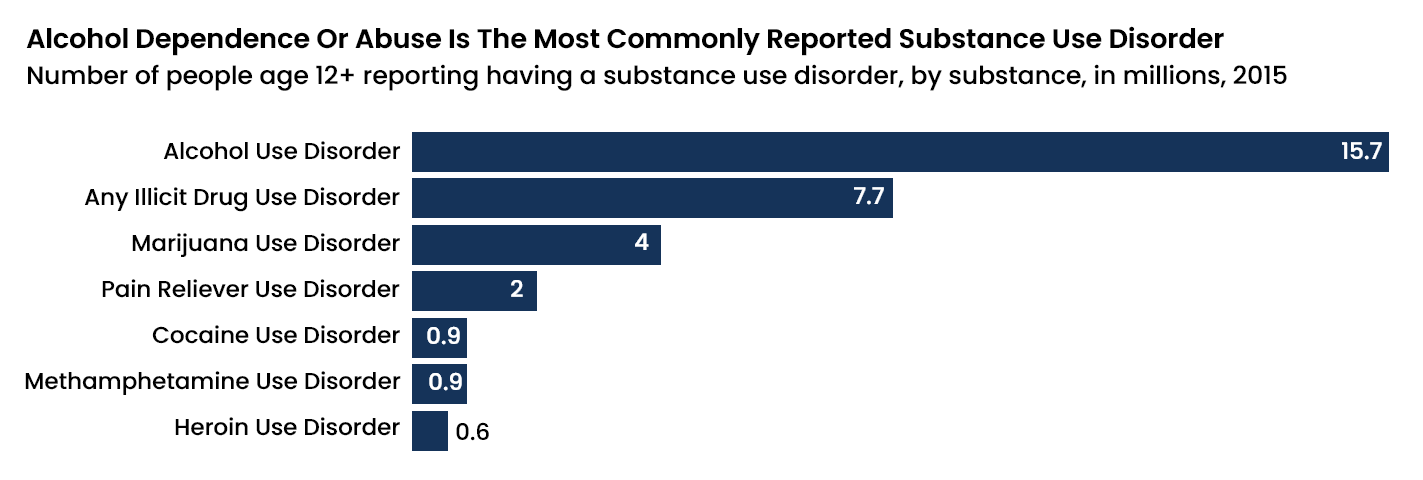
Alcohol Overdose Statistics
With the rise of alcohol consumption in the US comes the inevitable consequences of an overdose.
Binge drinking is recognized as the primary cause of alcohol-related overdoses in the country.
According to NIDA and NIAAA studies:
- Hospitalizations for alcohol overdose increased from 25,322 in 2006 to 29,822 in 2010. The
number of male patients was higher each year than females. - Hospitalizations for alcohol poisoning per 10,000 population increased from 1.0103 in 2006
to 1.1451 in 2010. - ER visits and hospitalizations for patients with AUD and mental health issues increased from
353,478 in 2006 to 472,905 in 2010. - The rate of alcohol-related visits to the ER rose by almost 50 percent between 2006 and
2014, particularly among women and consumers who are middle-aged or older. - In only nine years, the number of individuals transported annually to the ER for medical
emergencies triggered or aggravated by alcohol has grown from around 3 million to 5
million.
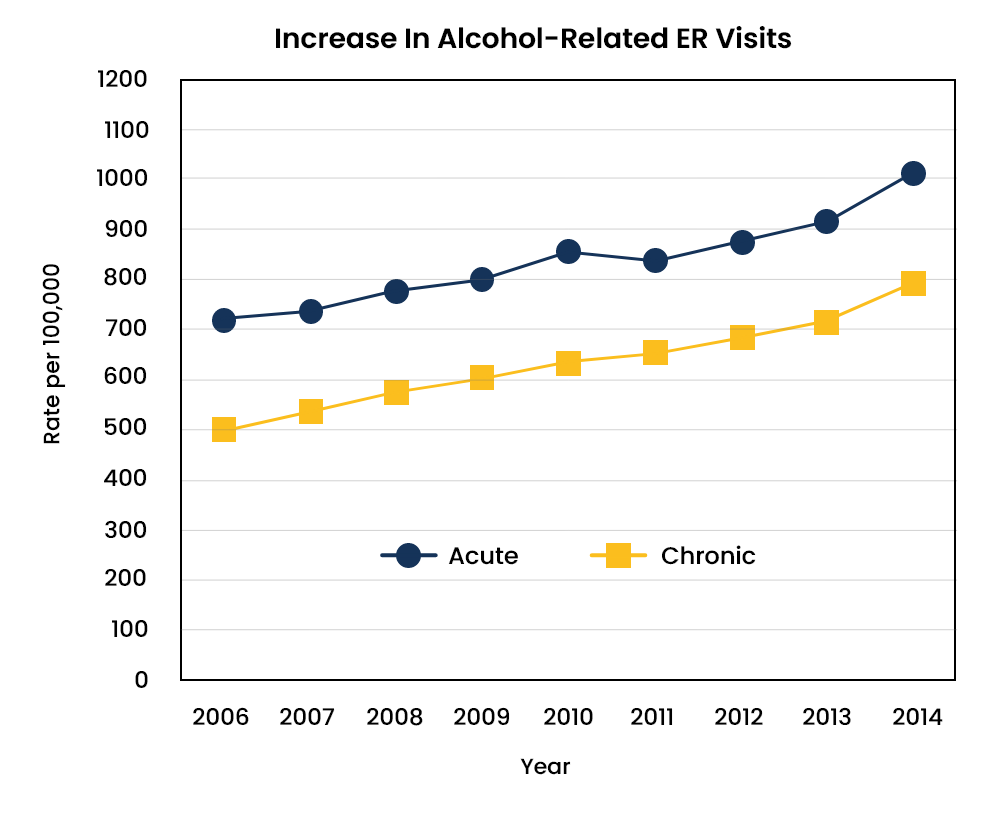
Alcohol-Related Death Statistics
Alcohol is the third leading preventable cause of death in the United States. According to the
Centers for Disease Control and Prevention (CDC), more than 88,000 people die from alcohol-
related deaths each year in the United States.
The long term effects of alcohol have contributed to many physical and psychological health
complication among many individuals that have resulted in fatal consequences. The direct and
indirect cause of death due to alcohol use in the US from 2006 to 2010 has cost the country
around 2.5 million years of potential human life.
- There are approximately 2,200 deaths from alcohol poisoning in the US every year.
- On average, six people die every day from alcohol poisoning in the US.
- Every day in the United States, about 30 people lose their lives in a vehicle accident involving
alcohol. - Alcohol-impaired driving deaths accounted for 9,967 deaths in 2014. (31 percent of total
driving fatalities in the US). - More than 75 percent of people who die from alcohol each year are men.
- NIAAA also reports that an estimated 95,000 individuals (around 68,000 men and 27,000
women) die per year from alcohol-related incidents. - From 2000 to 2017, 364 733 alcohol-induced deaths (including alcohol poisoning) occurred
in the US. - From 2007 to 2017, the percentage of alcohol-related deaths among American men
increased by 29 percent. - In 2018, there were around 10,511 alcohol-impaired driving fatalities, totaling 29 percent of
all traffic fatalities for the year. - In 2018, of the 83,517 liver disease deaths among individuals ages 12 and older, 42.8
percent was caused by alcohol. - Among all cirrhosis deaths in 2013, 47.9 percent were alcohol-related.
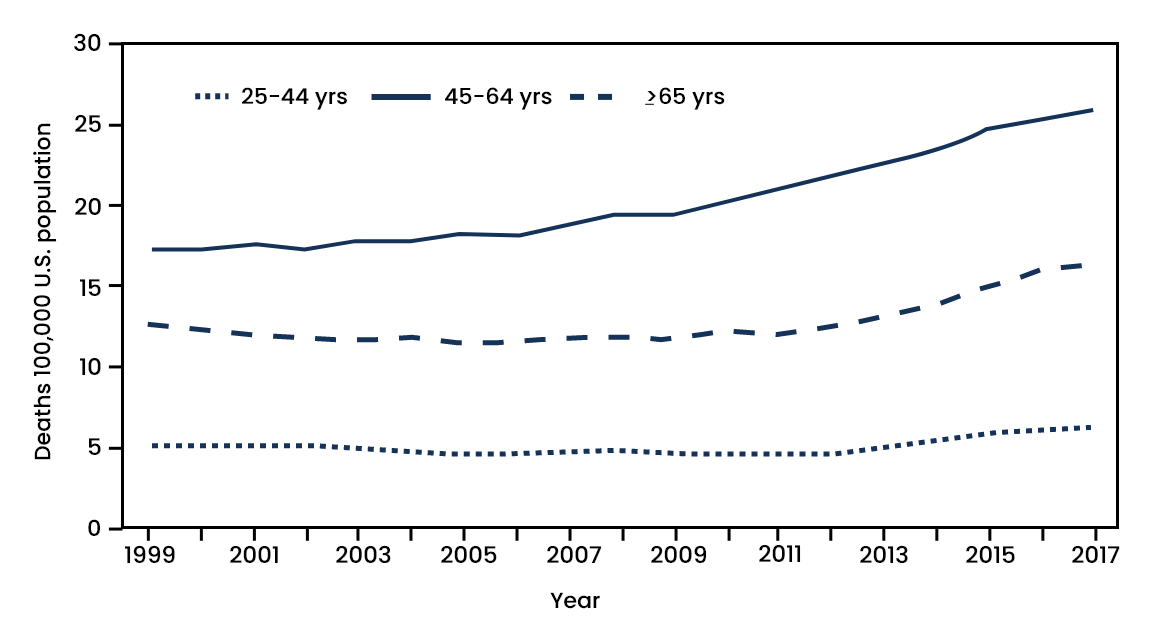
Alcohol Abuse Recovery Statistics
The treatment rates for alcohol abuse and alcohol use disorder have changed significantly during the
last few years. Although there are significant advances made in the treatment for alcohol addiction
over the past decades, from the estimated 15 million people struggling with an alcohol use disorder
in the United States, only less than 10 percent go on to receive treatment.
- According to the National Institute on Drug Abuse (NIDA), over 23 percent of the admissions
to public treatment centers are due to alcohol abuse. - The rate of admission for treatment for alcohol abuse was higher in 2005 (298 per 100,000)
than in 2015, at 189 per 100,000 population aged 12 years or older. - Alcohol admissions for aged 12 and older in the Census region Northeast increased from
244,723 in 2005 to 265,402 in 2008. However, the admission rates had decreased from
265,402 in 2008 to 190,474 in 2015. Similar patterns have been recorded in other Census
regions, as well.
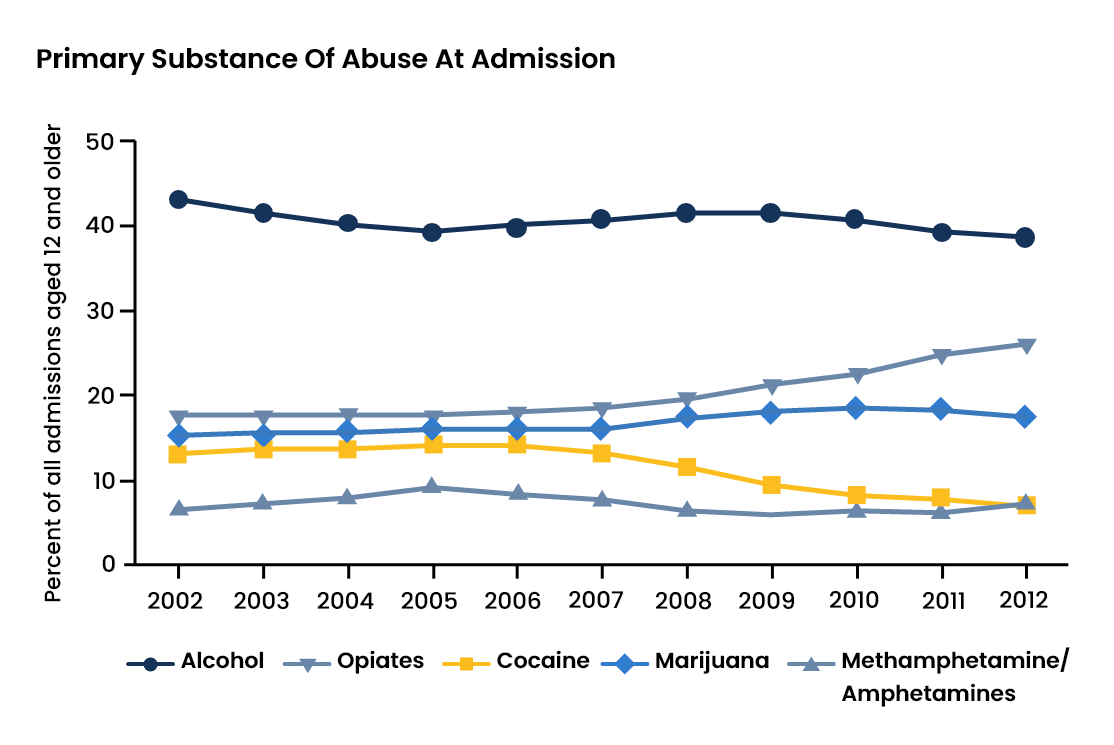
- In 2019, 14.8 percent of adults received treatment for alcohol use disorder through
hospitalization. - In 2019, 21.5 percent of adults received treatment for alcohol use disorder through inpatient
rehab facilities. - In 2019, 35.2 percent of adults received treatment for alcohol use disorder through
outpatient rehabs.

Economic Cost of Alcohol Abuse
The economic cost of alcohol abuse is measured through the loss of productivity, early mortality,
healthcare/ hospitalization cost, criminal and justice cost. The impact of alcohol abuse costs the
American economy almost a quarter trillion dollars in 2010. The biggest contribution to this cost was
due to loss of productivity.
- Alcohol abuse cost the US $191.6 billion in the year 2000.
- In 2010, alcohol misuse cost the United States $249.0 billion.
- Three-quarters of the total cost of alcohol misuse is related to binge drinking.
- Drunk driving costs the United States more than $199 billion every year.
- The economic impact of excessive alcohol consumption in the US is estimated at $746 per
person. - The estimated economic cost of excessive drinking had increased from $223.5 billion in 2006
to $249 billion in 2010. - Excessive alcohol use cost states and the District of Columbia a median of $3.5 billion in
2010, ranging from $488 million in North Dakota to $35 billion in California.
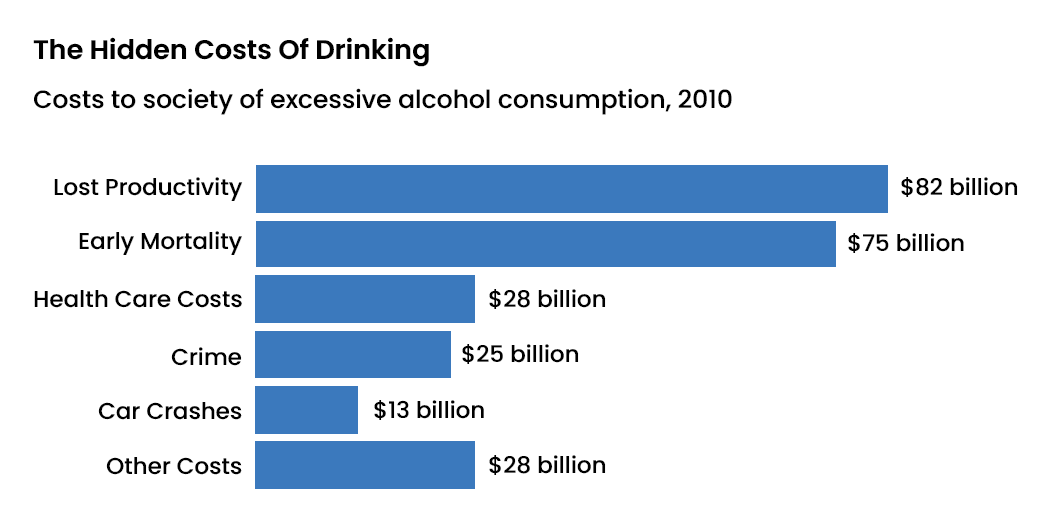
Recovery Partner Network
We aim to educate and empower. If you feel our library of resources does not cover your specific need, reach out to us, and we would be happy to help.
STATISTICS
© Copyright 2025

